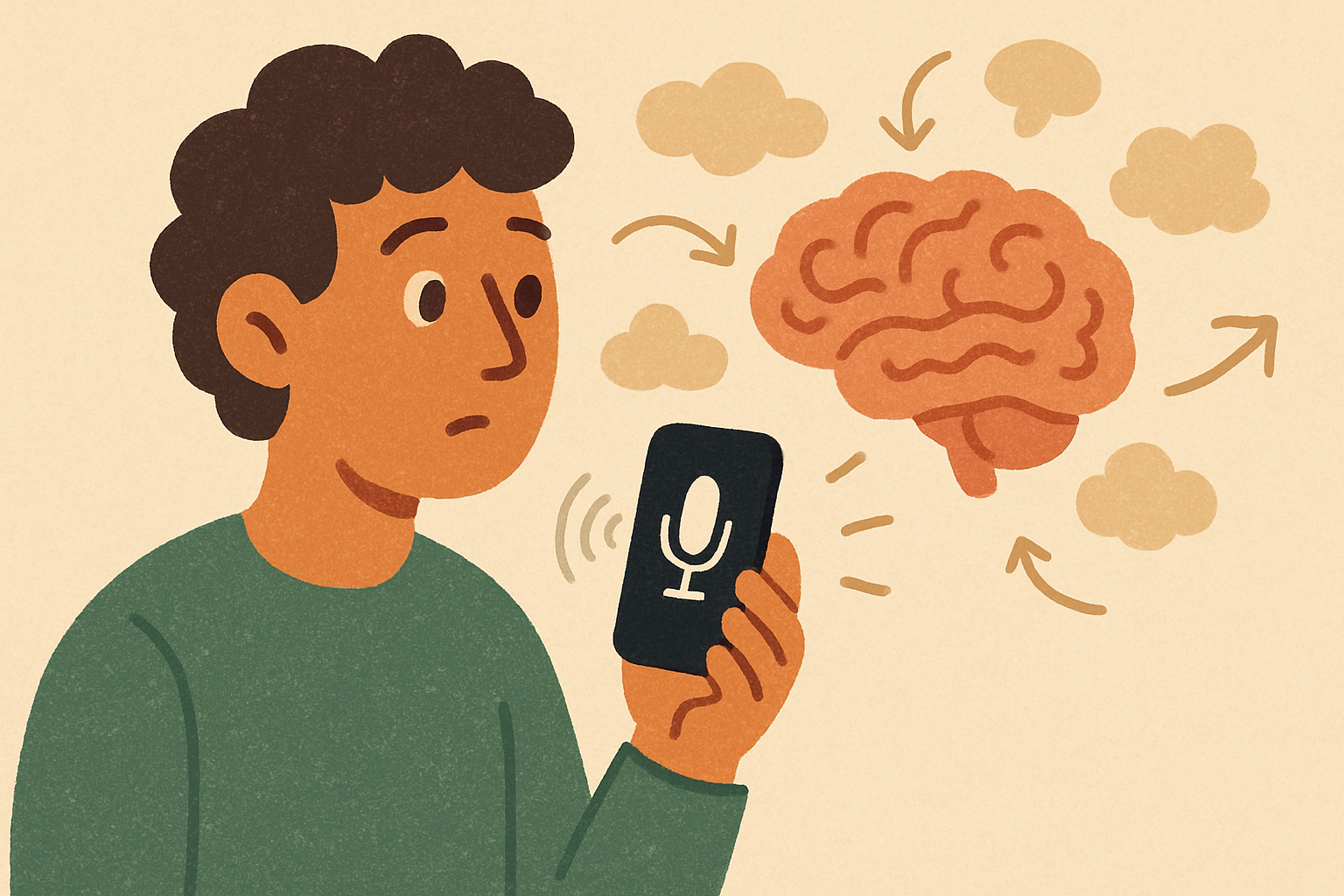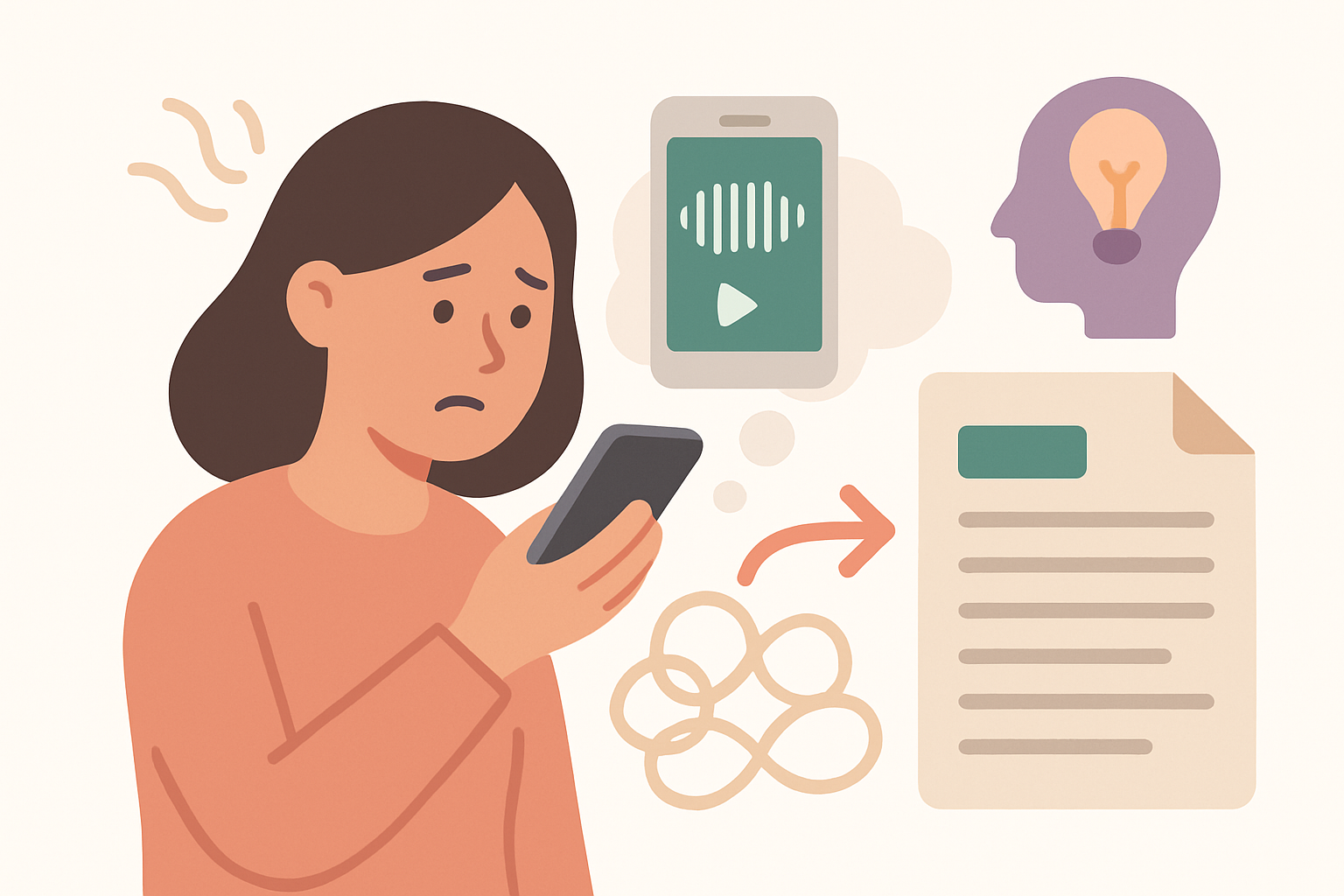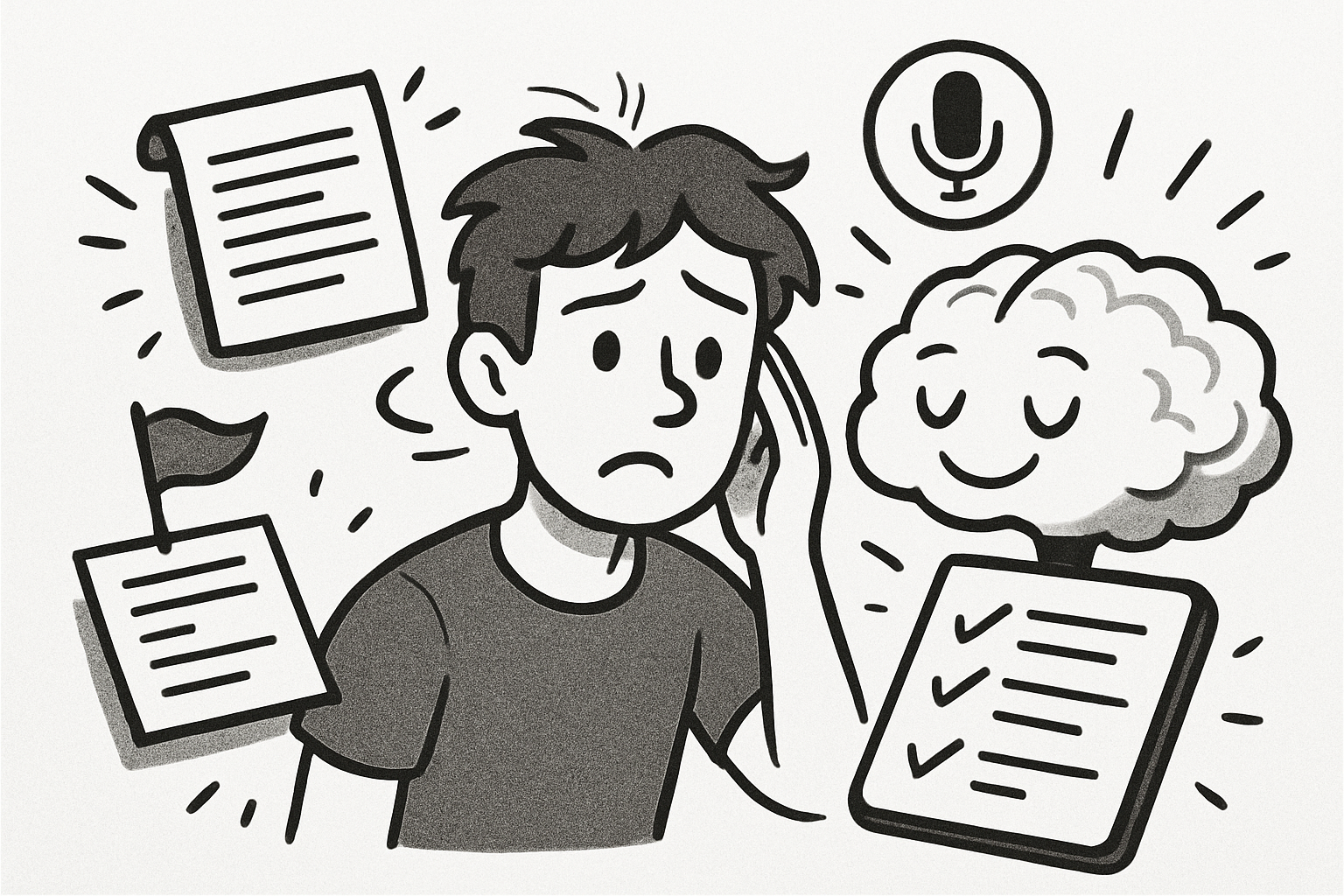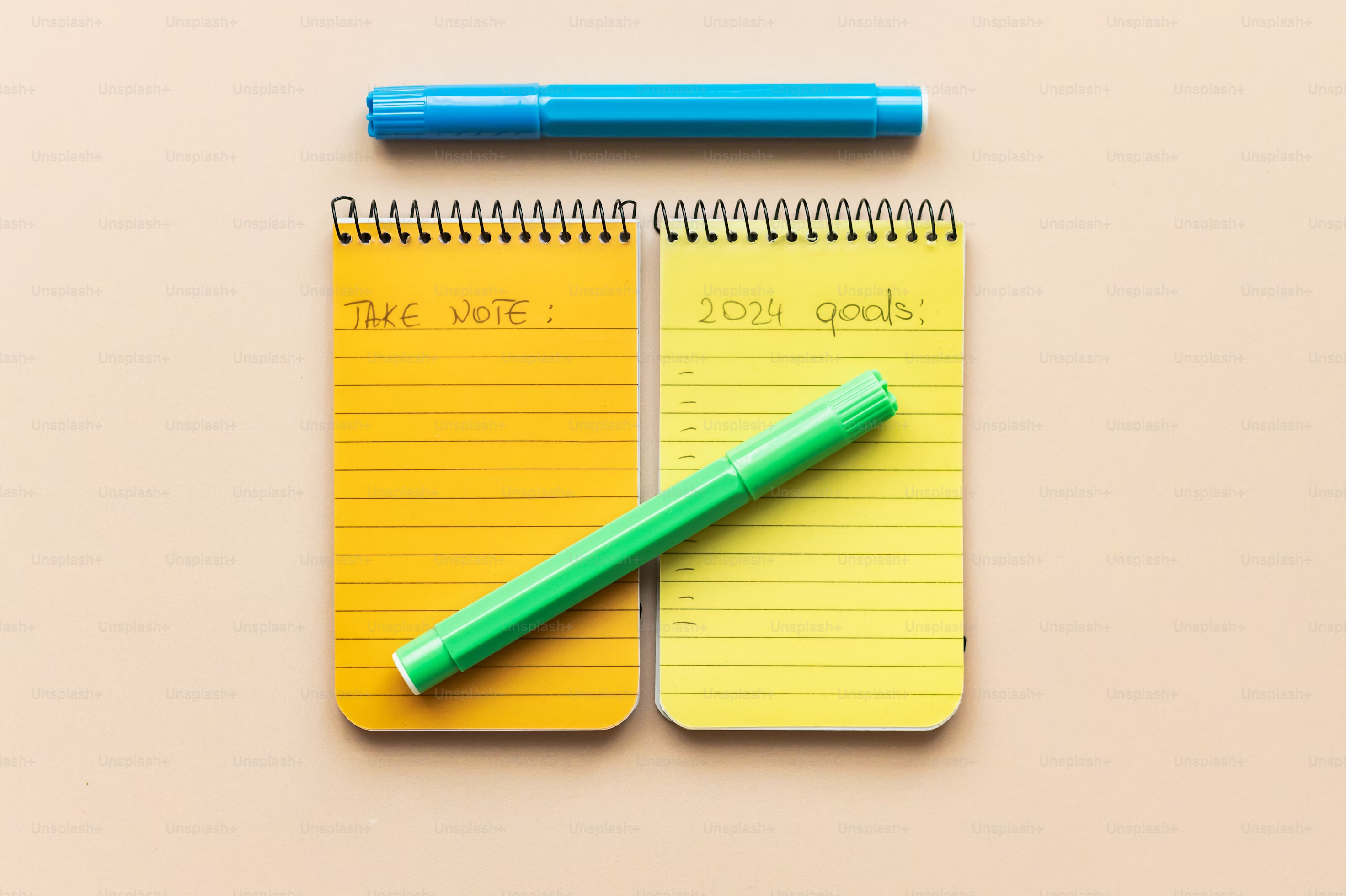The ADHD Brain Dump: How Voice Notes Can Capture Your Fleeting Thoughts
Struggling to capture ideas before they vanish? Discover why traditional note-taking fails ADHD minds and how voice notes can effortlessly capture, organize, and act on your thoughts.

The ADHD Brain Dump: How Voice Notes Can Capture Your Fleeting Thoughts
Ever had a brilliant idea flash through your mind, only for it to vanish moments later, like a slippery fish? For many individuals with ADHD, this is a daily reality. Our brains are often brimming with rapid-fire thoughts, insights, and tasks, making the concept of a "brain dump"—offloading everything onto paper or a screen—a necessary strategy to clear the mental clutter.
However, traditional methods like pen-and-paper or typing often create more friction than they alleviate. The speed mismatch between our racing thoughts and the slower act of writing can lead to lost ideas and frustration. So, what if there was a better way?
This article dives into how voice notes offer a powerful, low-friction solution to capture those fleeting ideas. We'll explore why voice notes are uniquely suited for the ADHD brain, the science backing their effectiveness, and how modern tools can transform these raw voice dumps into actionable insights, helping you move from thought to progress effortlessly.
Why Traditional Brain Dumping Creates Friction for ADHD Minds
The very act of writing or typing can be a significant hurdle for an ADHD mind. Our thoughts often race at a speed that traditional methods simply can't match. You start to jot something down, but before you finish the first sentence, three new ideas have already sparked, and the original thought is gone, lost in the cognitive whirlwind. This makes traditional note-taking an ineffective "quick capture system" for reliably storing information before it disappears4.
This constant starting and stopping to physically write interrupts the natural flow of thought. For minds that are already prone to impulsivity and distraction, such interruptions can derail the entire brain dump process before it even truly begins. It's like trying to catch water in a sieve; the harder you try, the more slips away.
Beyond speed, some individuals with ADHD may experience an aversion to the physical act of writing or typing. The pressure to make notes neat or structured, even in a "dump" meant for raw thoughts, can trigger "perfectionism paralysis." This desire for order, paradoxically, prevents the initiation of the dump itself, leading to more overwhelm.
These challenges tie directly into common ADHD executive function difficulties. Research highlights that 30%–40% of children with ADHD show significant impairments in executive functioning, impacting skills like organization, time management, and task initiation5. When the method itself feels cumbersome, it becomes another barrier, making it harder to start, plan, and sustain attention on the task of clearing your mind.
Jessica McCabe, in her TED Talk, highlights practical strategies for managing attention difficulties in ADHD, including tips on organizing thoughts and capturing ideas effectively. The struggle with traditional methods is a common theme, reinforcing the need for alternative approaches that align with the ADHD brain's unique wiring.
The Unfiltered Power of Voice Notes for Capturing Thoughts
Imagine simply speaking your thoughts out loud as they come, without the pressure of writing them down or typing them perfectly. That's the essence of a voice note brain dump. It's a method that works incredibly well for ADHD, precisely because it bypasses many of the hurdles traditional note-taking presents.
Here's why this method is a game-changer for the ADHD brain:
Matches the speed of thought: Speaking is significantly faster than writing. This allows you to keep pace with your racing thoughts, capturing ideas before they have a chance to evaporate.
Reduces friction and cognitive load: There's no need to find a pen, paper, or open a specific app. Just grab your phone and start talking. This lowers the barrier to entry, making it easier to fight procrastination and clear your mind3.
Allows for a natural, conversational flow: You can ramble, jump topics, and follow tangents without worrying about structure. A morning brain dump, for example, can relieve anxiety by capturing fragmented dreams, daily priorities, and random thoughts in one go1.
Can be done anywhere, anytime: Stuck in traffic? Walking the dog? Lying in bed? Voice notes let you capture ideas on the go, leveraging that impulsivity positively for immediate capture.
Beyond simple capture, research suggests that taking voice notes can lead to a higher conceptual understanding compared to typing, as it encourages more elaborate and comprehensive expression6. This means you’re not just capturing more ideas, but potentially richer, more detailed ones.
This aligns with a growing field of research exploring voice as a "digital biomarker" for ADHD. Studies are investigating how speech analysis can serve as an objective measure of ADHD symptoms like impulsivity or inattention. This field, known as "digital phenotyping," uses data from our devices to monitor mental health, adding scientific weight to the idea that voice is a natural and revealing output for the ADHD brain7.
Bridging the Gap: From Voice Dump to Actionable Insight with Modern Tools
Capturing your thoughts effortlessly with voice notes is a huge first step. But what happens next? A raw voice dump, while powerful for capture, can often be unstructured and difficult to process later. This is where modern technology, especially AI-powered tools, steps in to bridge this gap for busy and neurodivergent minds.
Tools like Otter.ai or AI-powered smart journals are designed to automatically transcribe spoken words into text, making your thoughts searchable and organizable8. This trend of "AI-powered brain dumping" helps users gain clarity by turning chaotic audio into structured information2. For students, assistive technologies like Jamworks can even record lectures and help organize notes, managing inattention during class9.
Yaranga is a tool specifically designed to integrate these features, transforming your voice dumps into actionable insights seamlessly:
Quick Add Notes on the Go: Yaranga makes instant voice capture incredibly easy. Just speak, and your thoughts are recorded.
Voice-to-text with Automatic Extraction: Your voice notes are automatically transcribed. More impressively, Yaranga's smart engine automatically extracts actionable items, dates, and hashtags from your spoken words. This means your to-dos, deadlines, and relevant topics are pulled out for you, significantly reducing the manual effort of processing your brain dump.
Notes and Tasks in One App: One common problem for ADHD minds is notes living in one place and tasks in another. Yaranga keeps your captured thoughts and the extracted tasks together in a single, unified place, preventing the mental overhead of switching between multiple apps.
- Smart Tagging Without Folders: Forget overwhelming folder hierarchies. Yaranga uses smart tagging to organize your information. This method simplifies finding what you need later without requiring you to pre-categorize everything, perfectly aligning with a "capture first, organize later" philosophy that is ideal for the brain dump process.
By simplifying capture and automating organization, these tools act as an executive function aid, turning brilliant but fleeting thoughts into concrete progress.
Beyond Capture: Structuring Your Ideas for Clarity
While a voice note brain dump is excellent for getting thoughts out of your head, sometimes you need to process that information more deeply. Once your ideas are captured and transcribed, you can apply more structured methods without the initial pressure of getting it "right."
For complex topics, studying, or project planning, consider these strategies:
Structured Note-Taking: Use frameworks like the Cornell Note-Taking System or the Outline Method to organize the key points from your transcribed notes. This helps create a clear hierarchy of information10.
Visual Aids: Turn your ideas into mind maps, diagrams, or charts. Visualizing connections between concepts can aid in comprehension and retention, which is especially helpful for visual thinkers with ADHD10.
The key is to separate the act of *capturing* from the act of *organizing*. Use voice notes for the fast, unfiltered dump, and then use these structured techniques to refine your thoughts when you have the time and mental space.
Conclusion: Embrace Your Natural Flow
For the ADHD brain, the greatest challenge is often the friction between the speed of thought and the tools used to capture it. Traditional note-taking methods can feel like running in mud—slow, frustrating, and counterintuitive. Voice notes offer a path of less resistance, allowing you to capture ideas as they happen, in a way that feels natural and liberating.
By combining the power of voice with smart tools that transcribe, analyze, and organize your thoughts, you can build a system that works *with* your brain, not against it. Stop letting your best ideas slip away. Start talking, and turn your mental clutter into actionable clarity.
References
Voicenotes.com. "Voicenotes: The Morning Brain Dump." Explains using voice notes for morning brain dumps to relieve anxiety and capture priorities. voicenotes.com/blog/voicenotes-usecase-morning-brain-dump
The MBA Tutors. "Managing ADHD with AI-Powered Brain Dumping Techniques." Discusses how AI tools help capture thoughts via voice-to-text. thembatutors.com/managing-adhd-with-ai-powered-brain-dumping
Juicy Memo. "Every Person with ADHD Should Voice Journal." Highlights the benefits of voice journaling for reducing stress and procrastination. juicymemo.com/blog/every-person-with-adhd-should-voice-journal
NoteMail. "Quick Capture for ADHD Brains w/ NoteMail." Explains why quick capture systems are essential for people with ADHD. notemail.ai/post/quick-capture-adhd-brains-notemail
Psychiatric News. "Executive Function Deficits Common in Children with ADHD." Provides statistics on the prevalence of executive function deficits in ADHD. psychiatryonline.org/doi/10.1176/pn.38.22.0025a
arXiv.org. "A Comparison of Voice and Text Note-Taking in University Lectures." Research indicating voice notes can lead to higher conceptual understanding. arxiv.org/abs/2012.02927
Google Scholar. Search for "ADHD vocal biomarkers" or "digital phenotyping ADHD" for research on voice data and mental health. scholar.google.com/scholar?q=adhd+vocal+biomarkers
TechRadar. "How I use AI to help my ADHD." Highlights AI tools like Otter.ai for transcribing voice notes. techradar.com/computing/artificial-intelligence/how-i-use-ai-to-help-my-adhd...
Jamworks. "5 Strategies For Taking Better Notes For Students With ADHD." Discusses assistive technology for students with ADHD. jamworks.com/news/5-strategies-taking-better-notes-students-adhd/
Saner.ai. "Note-Taking Strategies for Individuals with ADHD." Details structured and visual note-taking methods. saner.ai/note-taking-strategies-for-individuals-with-adhd/




